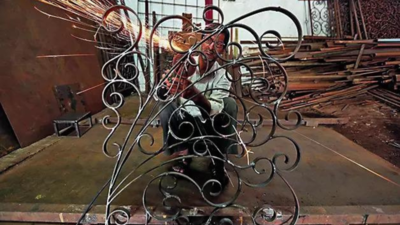NEW DELHI: Manufacturing activity in the country slowed to 12-month low in December as factory orders and production expanded at a softer rate.
December data showed the sector improving to the least extent in 2024, amid softer increases in output, new orders and stocks of purchases. Rates of growth remained substantial, however, underpinning further expansions in buying levels and employment. The survey showed cost pressures receded and were mild, but charge inflation remained historically high.
At 56.4 in December the HSBC India Manufacturing Purchasing Managers’ Index (PMI) was at a 12-month low and indicated a weaker improvement in operating conditions. The headline figure was down from 56.5 in Nov, but remained above its long-run average of 54.1, thereby signalling a robust rate of growth.
The survey is compiled from responses to questionnaires sent to 400 manufacturing sector firms and the 50 point mark separates expansion from contraction. “India’s manufacturing activity ended a strong 2024 with a soft note amid more signs of a slowing trend, albeit moderate, in the industrial sector. The rate of expansion in new orders was the slowest in the year, suggesting weaker growth in future production,” said Ines Lam, economist at HSBC.
“That said, there was some uplift in the growth of new export orders, which rose at the fastest pace since July. The rise in input prices eased slightly, wrapping up the year when Indian manufacturers felt the strain of sharp cost pressures,” said Lam. The survey showed that manufacturing sector employment rose for the 10th month in a row and the rate of job creation was the fastest in four months.
Looking at 2025, manufacturers were confident of a rise in output. Optimism reflected advertising, investment and expectation of favourable demand but sentiment was curbed by concerns around inflation and competitive pressures, according to the survey.
Corporates
Manufacturing activity slows to 1-year low level in December, shows PMI
Email :19

